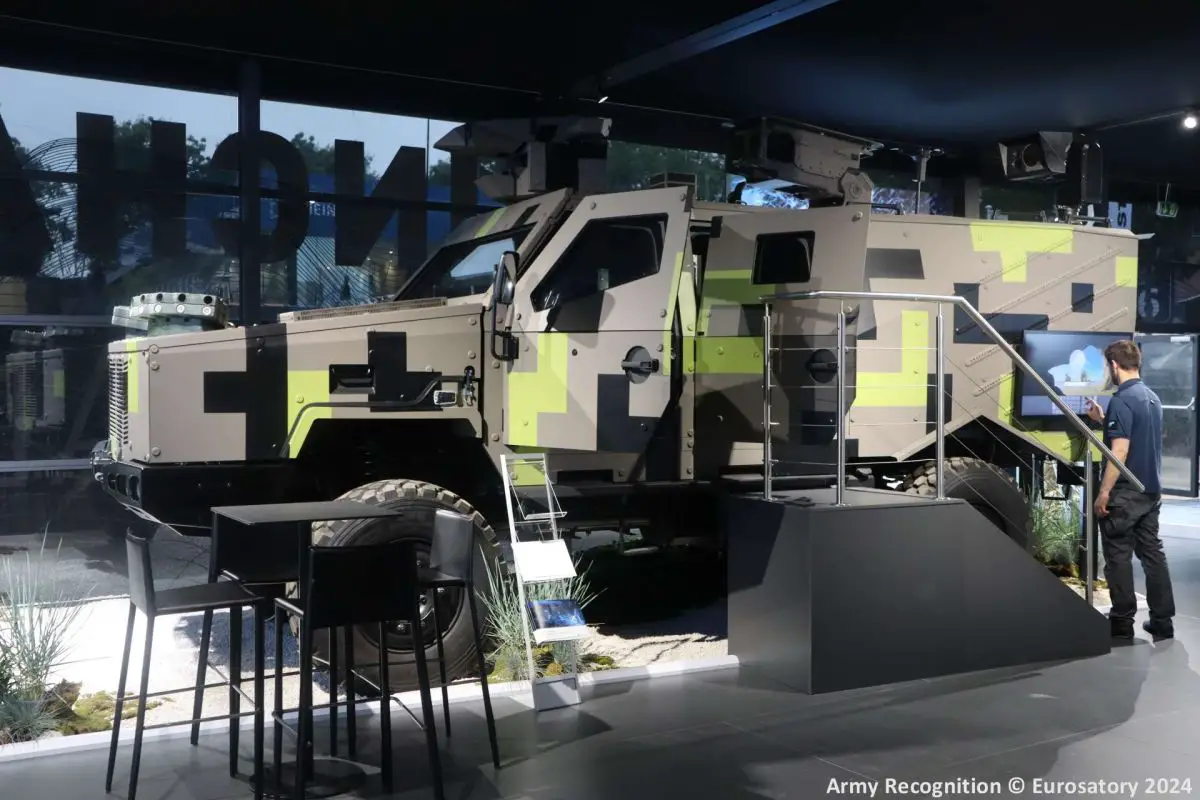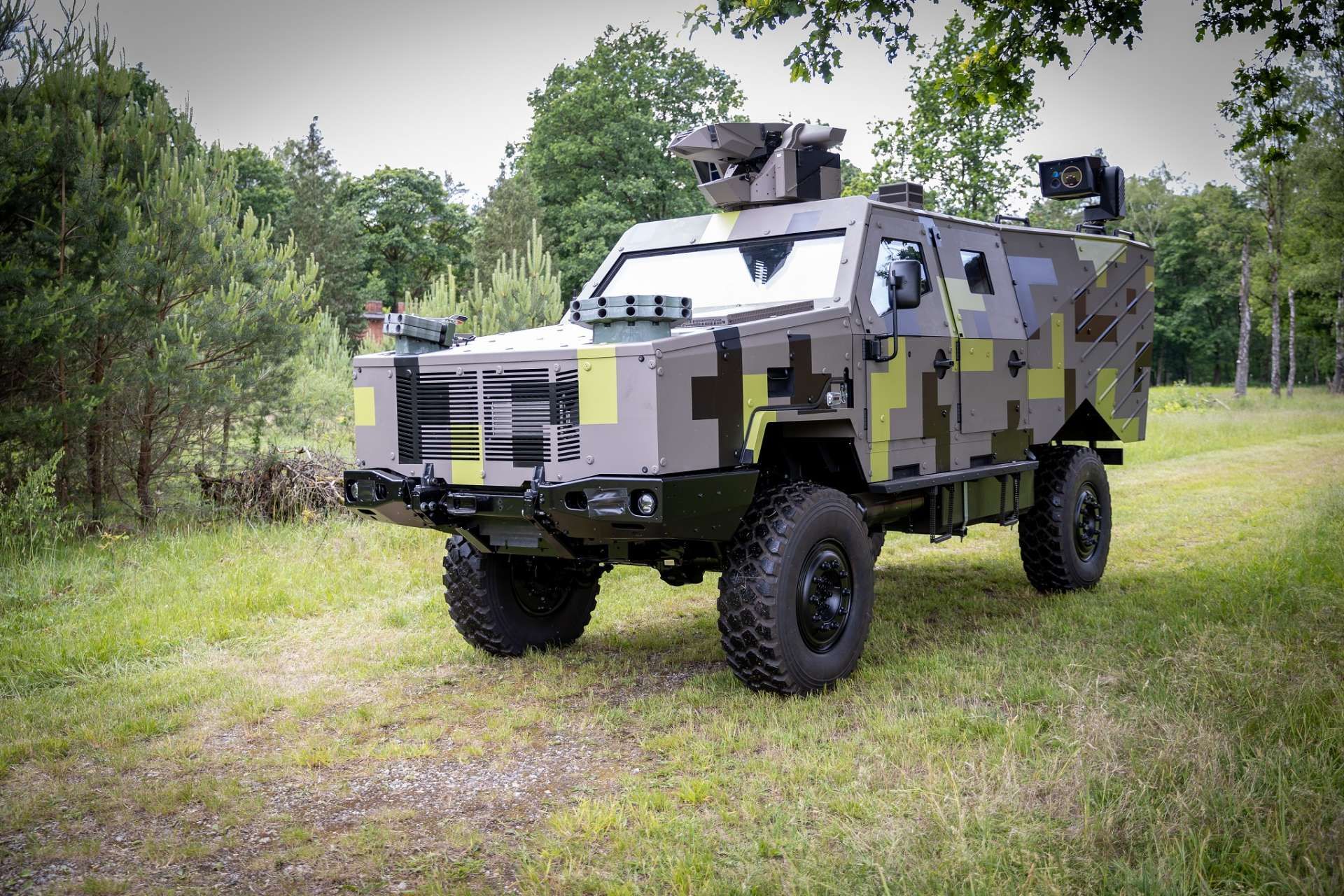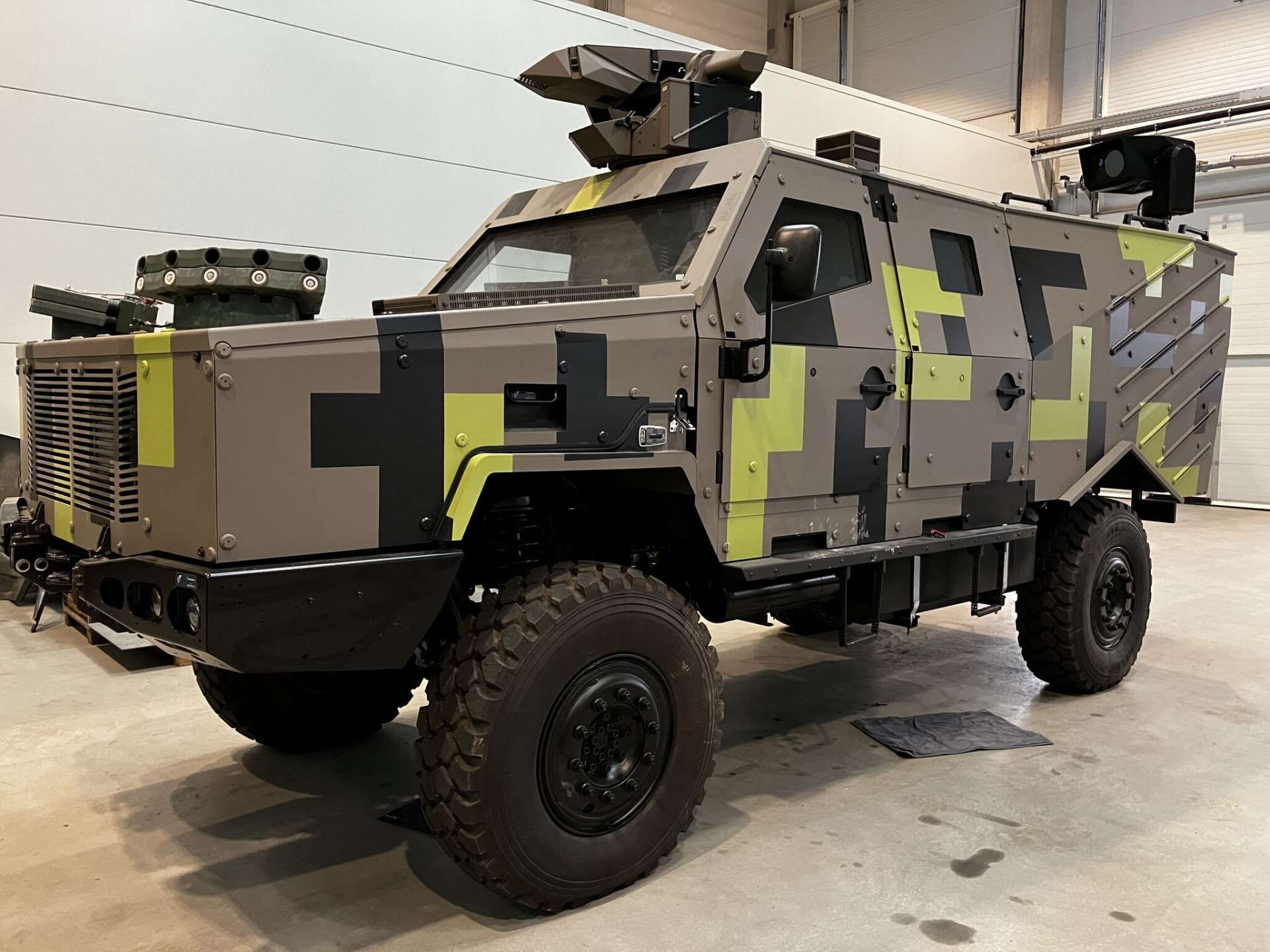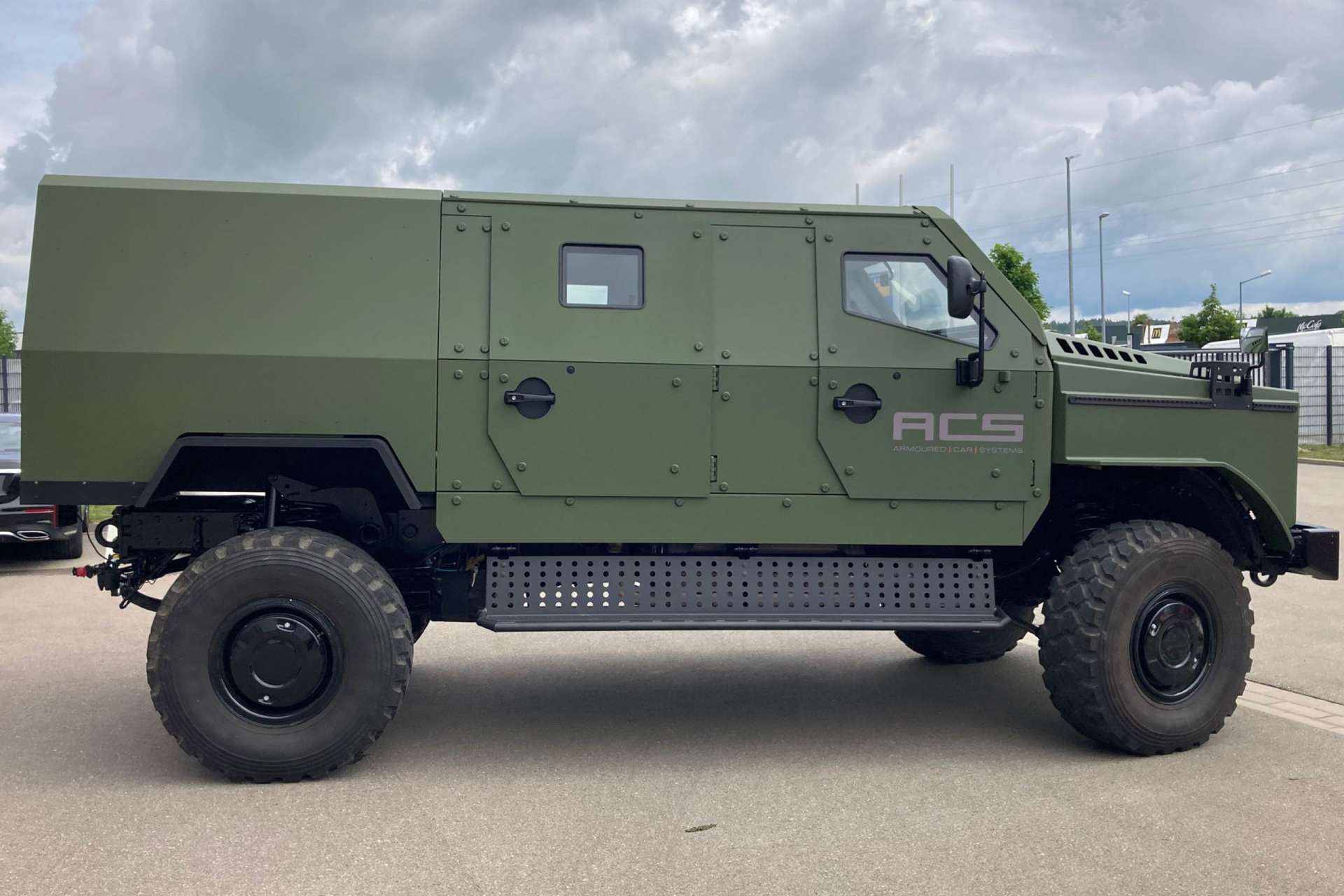Breaking News
Eurosatory 2024: New Rheinmetall's Panzerjaeger concept integrates AI for long-range anti-tank defense.
At Eurosatory 2024, Rheinmetall introduced its Panzerjaeger, an anti-tank vehicle concept designed for long-range anti-tank defense and enhanced situational awareness. This system aligns with Rheinmetall's Digital Brigade approach, which integrates soldiers, sensors, platforms, and effectors with new technologies such as artificial intelligence, autonomy, and robotics to increase combat effectiveness.
Follow Army Recognition on Google News at this link

At the Eurosatory 2024 exhibition, Rheinmetall showcased the system on a 4x4 vehicle, which offers high maneuverability, adequate protection, and an ergonomic design for crew endurance. (Picture source: Army Recognition)
The Panzerjaeger system is vehicle-independent, meaning it can be integrated across various platforms, including 4x4, 6x6, 8x8, and tracked vehicles, improving cost efficiency. At the Eurosatory 2024 exhibition, Rheinmetall showcased the system on a 4x4 vehicle, which offers high maneuverability, adequate protection, and an ergonomic design for crew endurance. The system's components, including sensors, equipment, and armament, are customizable to meet the user's requirements.
Key features of the Panzerjaeger include the EOS500 electro-optical sensor system mounted on a telescopic mast, providing a direct visual view with a target detection range of over eleven kilometers. The system also includes three fully integrated Rheinmetall "Recce S" UAVs, each with a reconnaissance range of eight kilometers, and an onboard charging station.
The Panzerjaeger’s primary armament includes two launchers, each holding four ready-to-fire Spike LR2 anti-tank guided missiles (ATGMs), with an additional four missiles stored for reloading. This 5th generation missile system supports various engagement capabilities, including non-line-of-sight (NLOS) firing up to 5.5 kilometers. Additionally, the Panzerjaeger is equipped with a Natter remotely controlled weapon station (RCWS) armed with a 7.62mm x 51 machine gun. The open architecture allows for customization, including the integration of alternative anti-tank guided missiles (ATGMs) or optional loitering munitions from the Hero family.
According to Rheinmetall, a typical 4x4 platform configuration may feature three Rheinmetall “Recce S” UAVs for reconnaissance, an EOS500 electro-optical sensor on a telescopic mast for target detection up to 11.4 kilometers, two SPIKE LR2 launching platforms for NLOS firing, a Natter remote-controlled weapon station with a 7.62x51mm machine gun, an Acoustic Platform for Vehicles (APV) that detects launch signatures acoustically and calculates the threat's position, and a ROSY smoke grenade launcher system for multispectral cover.

The Panzerjaeger system is vehicle-independent, meaning it can be integrated across various platforms, including 4x4, 6x6, 8x8, and tracked vehicles, improving cost efficiency. (Picture source: Rheinmetall)
The Panzerjaeger aims for cost efficiency by using commercial off-the-shelf (COTS) components, making it a market-ready solution with flexible configuration options according to customer needs. Its integration into the battlefield network is facilitated by digital, software-defined radios and the Tactical Core middleware from Blackned GmbH, enabling efficient communication and data exchange within the networked information space.
Rheinmetall's TacNet battle management system, developed for tactical-level operations, offers mission preparation, interface planning, and automated command and control processes. TacNet is compatible with the Tactical Core middleware from Rheinmetall's partner Blackned, facilitating the integration of soldier systems, unmanned systems, and vehicles. This integration enables a unified information space, reducing the sensor-to-shooter chain time.
The Panzerjaeger is integrated into the system network via digital, software-defined radios and the Tactical Core middleware. It also utilizes new battle management and training applications of the Digital Brigade, including apps for position selection and crew training.

The Panzerjaeger, also known as Panzerjäger, is an armored vehicle based on the Enok 14.8 platform from ACS (Armoured Car Systems), utilizing a 4x4 chassis supplied by Daimler Truck AG. (Picture source: ACS)
In offensive operations, the Panzerjaeger can follow attacking units or remain on the flank, using its situational awareness and long-range capabilities to engage enemy targets, monitor friendly units, provide fire support, and secure the flanks. In defensive scenarios, it supports combat troops from rear firing positions, monitors forward terrain, provides fire support, prevents enemy breakthroughs, and conducts surveillance of flanks or important areas of interest.
The Panzerjaeger, also known as Panzerjäger, is an armored vehicle based on the Enok 14.8 platform from ACS (Armoured Car Systems), utilizing a 4x4 chassis supplied by Daimler Truck AG. With a total weight of around 11,000 kg, the vehicle allows for an additional payload of up to 4,000 kg. It features a protected monocoque design that can accommodate four soldiers. The vehicle is intended to serve as a mobility carrier for various operational scenarios and is available in different configurations, including single cab, double cab, or as an Armored Personnel Carrier (APC).
Equipped with a 260 kW engine and a displacement of over 7,000 cm³, the Enok 14.8 is designed for off-road use and challenging terrain. It has a seating capacity ranging from 2 to 10 people and a payload capacity of up to 5,000 kg. The Enok 14.8 model includes a 100% OEM chassis with worldwide servicing options and can be armored up to STANAG Level 3. It has a top speed of 110 km/h, a wheelbase of 3,850 mm, and a turning circle of approximately 16 meters, with a maximum climbing ability of 100%, which supports its use in diverse military environments.

The Enok 14.8 model includes a 100% OEM chassis with worldwide servicing options and can be armored up to STANAG Level 3. (Picture source: ACS)


























